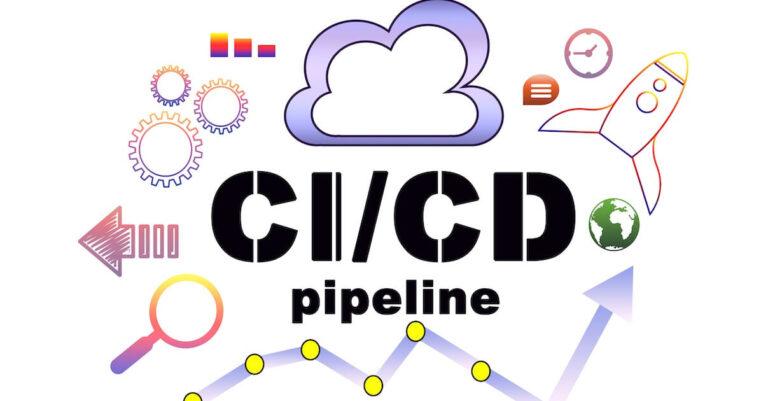Several small-sized and even large enterprises employed source code management to practice releasing code faster. Soon, these companies realized the need for more than source code management or version control systems to release code faster. And for that, they relied on continuous integration and continuous delivery.
Continuous integration and continuous delivery or CI/CD are a number of interconnected processes followed by developers and operations teams to develop quality software at speed while ensuring software’s reliability and availability. CI/CD is considered as one of the best DevOps practices and widely required automation as a service to help teams employ well-aligned and automated software release life cycle practices (SRLC).
These practices offer better collaboration and greater efficiency to software development teams throughout the software development life cycle (SDLC). There are two components of CI/CD, since new tools and paradigms have emerged in recent years, it has become possible to break down processes and give them a different category. Based on this, CD can be understood as Continuous Delivery and Continuous Deployment. In the below sections, we will describe them in detail and understand the difference and importance of both in DevOps practices. Now, let’s check about the CI/CD process, how they relate to each other, and what are the benefits of CI/CD for software development teams, when they optimize and automate more processes to achieve ever-faster time to value for customers.
Continuous Integration – Streamlines Development Efforts
There are two components of CI/CD. In this section, we will talk about CI, which is a software development practice used by DevOps to streamline the internal process of creating software. CI allows several developers to work together on a feature or module of the same application and commit their code to a shared code repository when they complete working on them or many times a day. When they commit their code, the building management system automatically pulls code, creates a build, and then tests it.
The most interesting thing about CI is that it sends back instant updates about the test status to the developers who commit the code, whether the test fails, and notifies them to fix the code. The instant feedback allows developers to resolve the bugs the same day during the development process.
Moreover, CI allows integration of incremental changes. Regular merging of code enables teams to complete projects quickly and efficiently. It ensures a testable, up-to-date build that will properly compile, which is critical for frequent and rigorous application testing. The approach saves so much time and resources used to spend fixing issues later in SDLC, or after pushing updates when issues become much more difficult to find and fix.
Continuous Delivery – Always Deploy-Ready Code
Continuous delivery is a process that allows development teams to build and deliver complete portions of the software to a repository, such as GitHub or a container registry. Continuous delivery aims to make releases regular and predictable for DevOps professionals and seamless for end-users. Another innovative thing about continuous delivery is it always keeps code in a deployable state. Hence, the DevOps team can push updates live at a moment’s notice with little or no issues.
DevOps teams automate CI/CD pipelines that move code through the appropriate environments without requiring human input. It accelerates the build, test, and deployment stages of software development as well as any additional stages teams have in place, depending on the processes they use.
Continuous Deployment – Customers Always Have The Latest
CD also stands for continuous deployment in the CI/CD pipeline. Continuous deployment is an extension of continuous delivery that allows builds that have passed testing to be automatically deployed directly to production environments on a daily, or even hourly, basis.
Continuous deployment accelerates the feedback loop with customers. It also reduces the burden on operations teams by automating the next step in the pipeline.
Once an organization establishes a stable and a mature continuous delivery pipeline, they jump for adopting automated continuous deployment and testing in a “blue-green” sequence.
Teams also uses “canary” deployment approach as a method of deployment based on the project requirements.
Continuous Delivery Vs. Continuous Deployment
One should not confuse Continuous Delivery (CD) and Continuous Deployment (CD). In CI/CD, CD stands for Continuous Delivery as well as for Continuous Deployment. However, it is either continuous delivery or continuous delivery and continuous deployment since adopting automation fully requires a complete change in an organization’s culture and engineering methods. Both are the automated processes occurring at different delivery workflow points that organizations adopt based on availability of skilled professionals and project requirements. There are other factors to it that we discussed below. Before that just understand that in a continuum of DevOps automation, these practices are adopted as three steps:
- Continuous integration streamlines development and automates building and testing phases of SDLC. It allows multiple developers to work on the same code base at the same time.
- Continuous delivery is a way of automating the process of delivering completed code blocks into the main branch so that it could be deployed to a production environment by the operations team. Continuous delivery focuses on the development part of a DevOps team and enables them to automate the process of testing and committing code.
- Continuous deployment is a way of automating the process of deploying code into a production environment. Continuous deployment focuses on the operations part of a DevOps team to automate the process of deploying new code to customers.
Not every organization works as DevOps, some have adopted agile plus DevOps practices. This way, they start with continuous integration and mature quickly into continuous delivery, achieving CI/CD. Many organizations choose to stop here, wanting to manually release the production code. Others choose to progress with continuous deployment to leverage DevOps to accelerate business innovation by supporting the entire software development, distribution, and deployment pipeline.
How Automated CI/CD Processes Help Organizations?
Organizations now have realized releasing new products and services faster is crucial to meet competitive demands and earn user’s trust on their offerings. What exactly they need is to use tools or proven practices which allows them to reach to user’s demands easily without compromising quality and reliability. CI/CD practices are the sum of tools and practices to achieve such business goals. Companies have also recognized CI/CD as the fundamental to DevOps and DevSecOps initiatives.
CI/CD practices allow organizations to adopt many tools and methods at every step of application development such as enabling them to manage features, versions, testing, and builds. The automation added to every stage of the pipeline, from building, packaging, and testing to pushing applications to different production environments accelerates continuous integration, continuous delivery and continuous deployment. As a DevOps toolchain, teams quickly identify quality issues earlier in their software lifecycle.
Moving from manual steps to automated processes also allows implementing a full-stack observability platform. The observability tools and practices offer code-level visibility of all software builds, apps, and services in the environment, whether they’re in development or deployed to end-users.
Wrapping Up
Optimizing and automating CI/CD processes not only simplifies delivering faster updates or new products to customers, but also provides teams quicker turnaround times to find bugs, fix them, and create a more stable code base early on. You may have a CI/CD integrated solution within your organization but if it is not surviving your desired results as promised, you must go for a Devops consulting service from an experienced software development and cloud consulting company. Updating tool stacks and technologies with evolving business needs is crucial to be competitive and making the most out of your automation investment.




